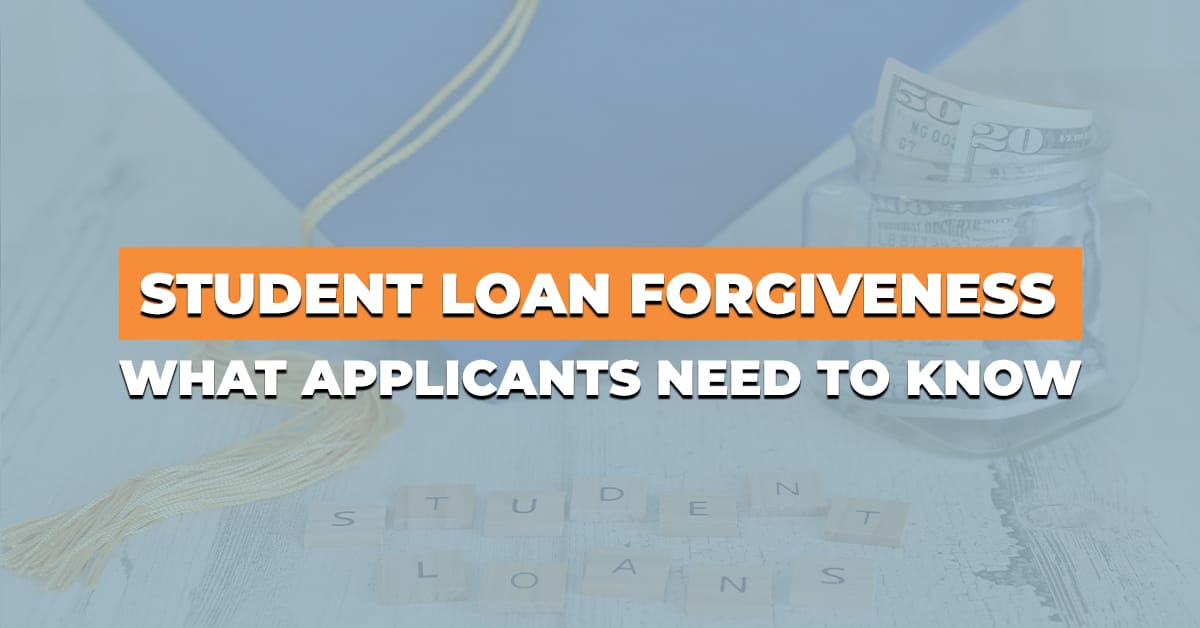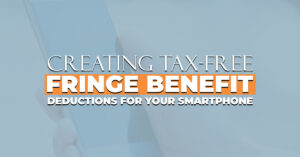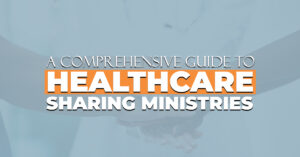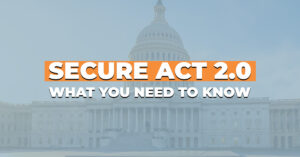Student Loan Forgiveness: What Applicants Need to Know in 2022

When it comes to extending their education, applying for student loans has been vital for new and returning students to be able to fulfill their financial obligations. President Joe Biden and his administration recognized that alleviating this financial burden could help students across the country. By providing the student loan forgiveness program, this debt relief helps those who are furthering their education without having crippling debt under them as they enter the workforce, or wherever they choose to go in life.
Even with the availability of Pell Grants, and various scholarships, students can find themselves with a heavy weight on their shoulders with the rising cost of living, dorm costs, costs of books, rising food costs, and minimum wage becoming stagnant. With relief in sight for many students across the nation, there are a few things that applicants need to know before putting in their application.
What is Student Loan Forgiveness?
Although they are used in different contexts, the terms “forgiveness,” “cancellation,” and “discharge” all refer to essentially the same type of program. When their income falls below a certain threshold, or applicants are no longer employed, this is essentially termed forgiveness. When other extenuating circumstances, such as disability, prevent applicants from making their payments, this is termed discharge. No matter how the terms are used, this program was designed to help relieve students from making those payments.
How Does the Program Work?
Any outstanding loan balances will be adjusted based on the amount of debt that has been forgiven. Applications will be available online beginning in October, however. The Education Department stated that if a borrower applies, they can expect relief in four to six weeks. According to the Education Department, for changes to be reflected in their student loan monthly payment starting in January, they must apply for student debt forgiveness before November 15. Although potential applicants have until December 31, 2023, they would want to apply as soon as possible. Students are highly advised to be aware of scams and other programs that are not associated with this official program.
Luckily, there is no additional cost to enroll in the new forgiveness program. This ensures that applications can be processed with ease. Although eligibility cannot be ensured, those who qualify should apply as soon as possible to seek relief in a timely manner.
How Much Is Being Forgiven?
According to the new White House plan, borrowers of federal student loans are eligible to have anywhere from $10,000 to $20,000 of their debt forgiven. This will be determined by their annual household income and any grants previously received. If the student has received a Pell Grant, for example, up to $20,000 may be determined to be forgiven.
Qualifications for Student Loan Forgiveness
Some students may receive automatic loan cancellation. These are generally applicable to students whose data is already on file and can be verified without even putting in an application. Even though they may feel that they qualify for forgiveness or have their data on file, it is still highly recommended to go through the formal process as soon as it is made available. For others, it is recommended to check their account on the Studentaid.gov website under “My Aid” to see if their college financial aid package contains a Pell Grant to determine the amount qualified for. Higher education analyst Mark Kantrowitz said most recipients came from families making less than $60,000. Only those making less than $125,000 annually or married couples earning less than $250,000 per household are eligible for the relief. The adjusted gross income, or AGI, may differ from their actual wage and will be considered by the Education Department. It is advised for applicants to look for line 11 on the front of their tax return, often known as Form 1040, to determine their AGI for 2020 and 2021. Applicants should be fine if their income is below those limits in any year.
Loans to private schools are not covered by the student loan forgiveness program. According to experts, applicants should contact their CPAs, advisors, and other experts as soon as possible if they have any additional inquiries about forgiveness or qualifications. Loan servicers are expected to see an upsurge in queries starting a few days before the deadlines.
Applications and Deadlines
On August 24, the Biden administration made plans to offer borrowers four extra months to get ready to resume their payments. No action was required to initiate the prolonged pause because it happened automatically. However, if students are deemed eligible, they should still submit their application for any federal student loan forgiveness as soon as possible. Additionally, students should confirm that the Education Department and their servicer have their most current contact details. At StudentAid.gov, applicants can ensure that the information is up to date. This will help to ensure students who apply don’t overlook any crucial details about the forgiveness process.
The Education Department says that people who want to get rid of their student loans should fill out an application by November 15 to make changes to their monthly payments starting in January. Any loan balances still owed will be recalculated based on the amount of debt forgiven. their payment each month will go down. Online applications won’t be available until October. The Education Department said that once a borrower fills out the application, the borrower can expect help in four to six weeks.
Make sure Applicants don’t fall for a scam. Applicants don’t have to pay anyone to join the new program to forgive debts. Don’t worry if Applicants miss the date of November 15. Applicants could apply until December 31, 2023, but Applicants should do it as soon as possible. Check to see if their state will count student loan forgiveness as taxable income to avoid surprises. Ensure all their information on StudentAid.gov is up to date. If Applicants defaulted on a student loan, Applicants should check out the Fresh Start program.
Will Forgiven Debt Be Counted as Taxable Income?
Debt relief provided by this new, constrained program won’t be counted toward their federal income tax return’s taxable income. Some states consider student loan forgiveness as taxable income on state income tax returns, but not Michigan. Ron Leix, a Michigan Department of Treasury representative said federal student loan debt forgiveness won’t be considered taxable income on their state income tax return for Michigan.
A thorough examination by the Tax Policy Center found that most states with income taxes will not provide tax-forgiven student loans since they “conform” to federal definitions of income. Minnesota, Indiana, North Carolina, and Mississippi are the four states that intend to classify forgiven student debts as income.
According to the Tax Policy Center, three states are also examining their tax laws: Wisconsin, Arkansas, and California. Usually, forgiven debt is considered income in most tax-related cases. The American Rescue Plan Act, which was passed in 2021, clearly exempted student debt discharged between 2021 and 2025, which is something the rumors might not have considered. According to the Tax Policy Center, not all states comply with the most recent version of federal tax legislation.
To Summarize
With the qualifications and rules consistently being updated, students and potential applicants should consider hiring consultation if issues arise or checking on the latest news before their application is completed to be considered. The current presidential administration is working
diligently to make sure that potential challenges and hurdles are being addressed so payments can be distributed as quickly as possible. If you know someone who potentially qualifies or if you are seeking guidance for yourself, be sure to stay up to date as best as possible.
The future implications of this program have certainly had their challenges but the outweighing benefit for those who qualify supersede the roadblocks ahead. For low and middle-income earners, this student loan forgiveness program could help these applicants reach their potential
quicker without falling under crippling debt. In the long run, this could have fantastic benefits by providing continuing education for all instead of only those who are wealthy or have no further option by beginning their careers with incredulous debt






